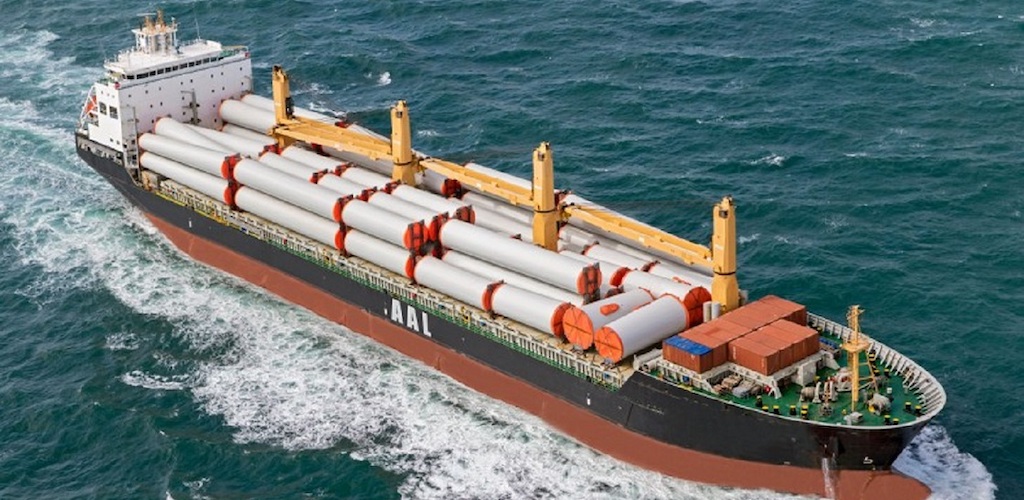But Could Maintain at Record Highs into 2022

By Malcolm Ramsay
While multipurpose charter rates have continued their stratospheric rise in November, they may be nearing their peak with signs that levels may plateau soon.
Exceptional global supply chain dynamics, which have propelled rates ever upwards this year, may be shifting as a return of capacity eases some pressure. Christophe Grammare, commercial director at AAL Shipping told Breakbulk that he believes multipurpose vessel charter rates “have reached their apex in terms of value,” but will “remain at these historically high levels for the short term at least.”
Hamburg-based research consultancy Toepfer Transport is more optimistic on short term growth, noting that the firm’s multipurpose shipping index “continues its rise, increasing constantly for the 17th consecutive month since June 2020,” and that “a new benchmark in the region of US$20,000 is not out of reach.”
Yorck Niclas Prehm, head of research at Toepfer, said that “owners who may offer F-Type positions in Asia, are seeing the 'US$20Ks' already for trips or fixtures with shorter periods. The desperate search for tonnage and the need to move containers and project cargo keeps the competition pushing freights and time charter levels to new highs.”
Toepfer’s TMI Index is based on a 12,500 deadweight-tonne multipurpose /heavy-lift F-Type vessel for a six to 12-month charter period.
Research consultancy Drewry likewise reports strong growth in its latest figures, but is less optimistic of ongoing rises predicting rates may soon start to plateau. The firm notes a rise of just 2.5 percent in its latest Multipurpose Time Charter Index, as compared to the 5.3 percent rise seen in September, taking the value to US$10,294 per day for October.
“The short-sea sector continued to rise strongly over October as demand levels remained high and spot vessels scarce. The end of the year is usually a peak demand period for this sector. While this has been an unprecedented year, and we are yet to return to ‘normal,’ we would not expect there to be a significant change to this trend over the next few months. Indeed our expectation is that short-sea rates could keep the Index firm,” a Drewry spokesperson said.
Citing a weakening of dry bulk rates and ‘unofficial capping’ of container freight rates, Drewry expects that period rates for larger, heavy-lift capable vessels “may start to plateau to the end of the year.” and that activity on the spot market suggests a softer market outlook.
Drewry’s index is based on a measure of charter rates over a one-year period, comparing a basket of vessel types and sizes to forecast the market movement over the coming month.
Support Extends to 2022
Looking beyond the end of this year, the outlook remains volatile across the shipping sector and as a result, Grammare of AAL Shipping expects the forward order book to remain tight and predicts that rates will remain at current high levels “for at least the next year – possibly a bit longer” with the industry “to see the usual seasonal and regional charter rate fluctuations within this plateau.”
Ongoing disruption and lack of capacity in the container segment is expected to support multipurpose vessel rates into the begininning of next year, especially for those MPVs best suited for the carriage of large volumes of containers, while a raft of new energy transition projects from mid-2022 are set to spur renewed demand for "mega-size" MPVs.
“While the container market is now stabilizing, we are nevertheless seeing peak demand in the wind sector and expect that all MPVs able to transport modern and larger wind turbines will achieve the highest levels of charter rates. At the moment, Infrastructure, oil and gas and mining projects remain temporarily subdued,” Grammare said.
AAL’s recent order of four 32.000-deadweight-tonne MPV vessels is forecast to play into this demand, and with rates staying high may the first of many newbuild orders in the MPV segment next year.
“The addition of modern, efficient tonnage is badly needed,” Prehm of Toepfer said. “It appears however, that the newbuilding price levels have reached a plateau, and in our view a further increase of prices can only be sustained if the freight levels stay strong for some more month."
With a swath of newbuild container vessels on order, the calculus is delicately poised for most multipurpose operators as supply and demand hang in the balance. The majority of new container vessels wil not reach the market until 2023 however, meaning that next year may prove critical as the rate that new wind projects develop, along with any further logistics disruptions, will define MPV rates.
Should these factors combine favorbly to support higher MPV rate, Prehm expects this should “strengthen owners’ confidence that investments will pay off and the shortage of ships is not a temporary phenomenon,” adding that owners who engage in the purchase of secondhand vessels will “have to pay up for the few modern MPV vessels still available for sale.”

